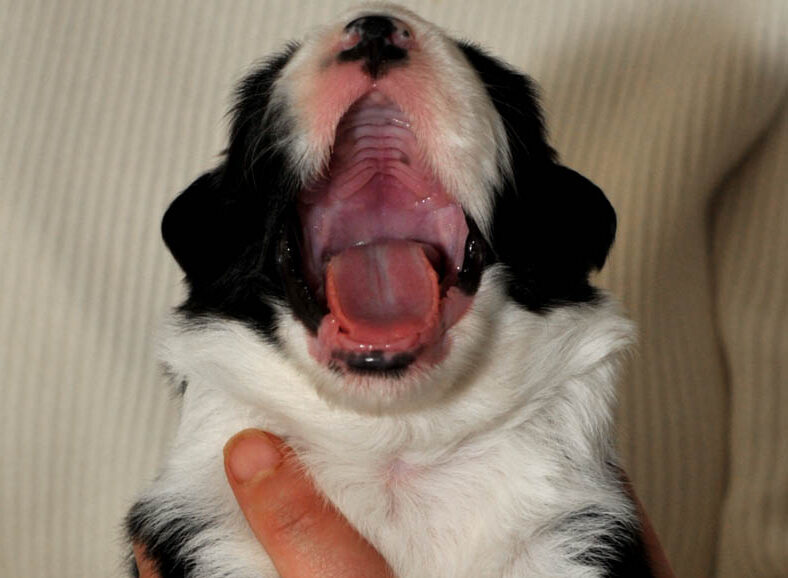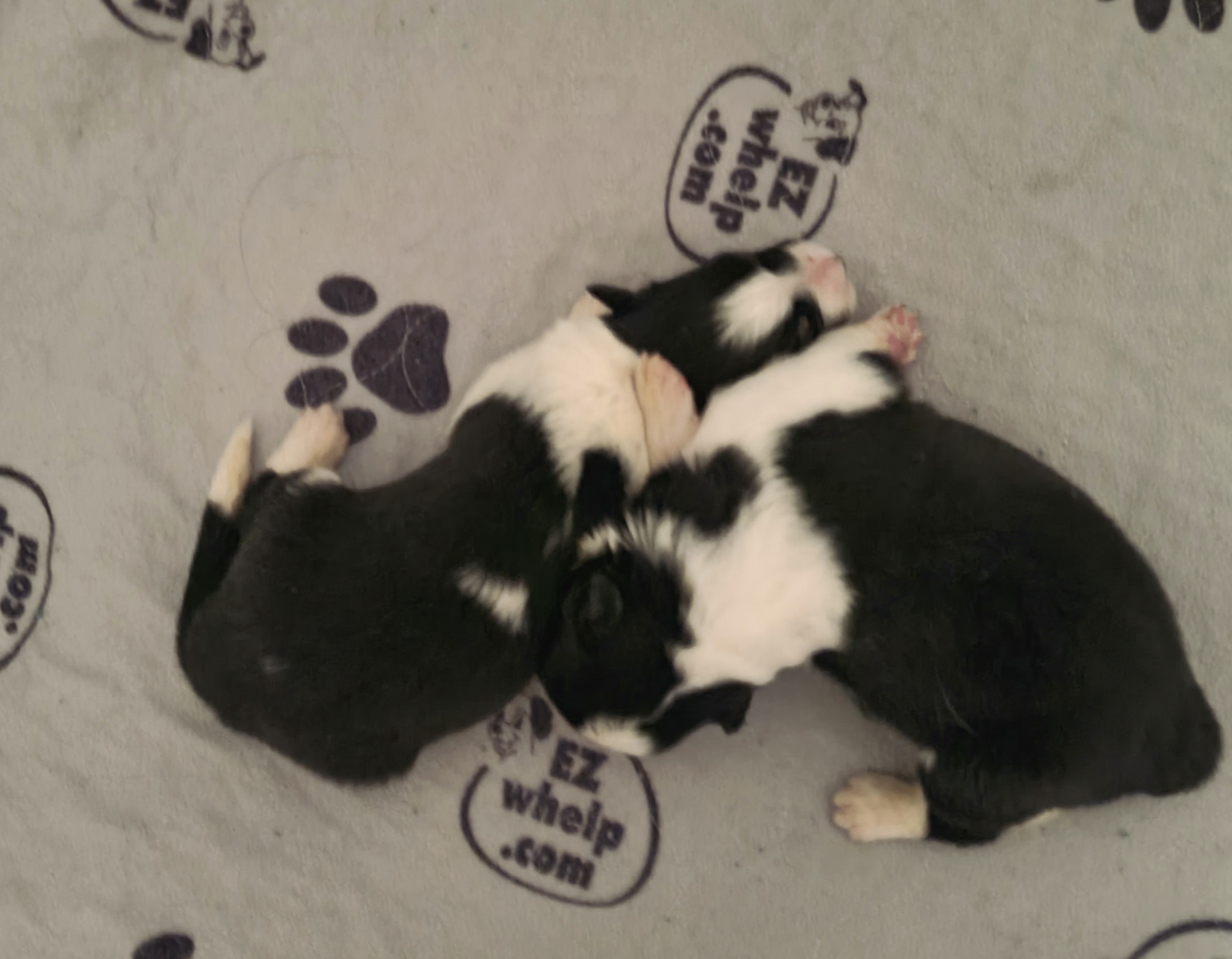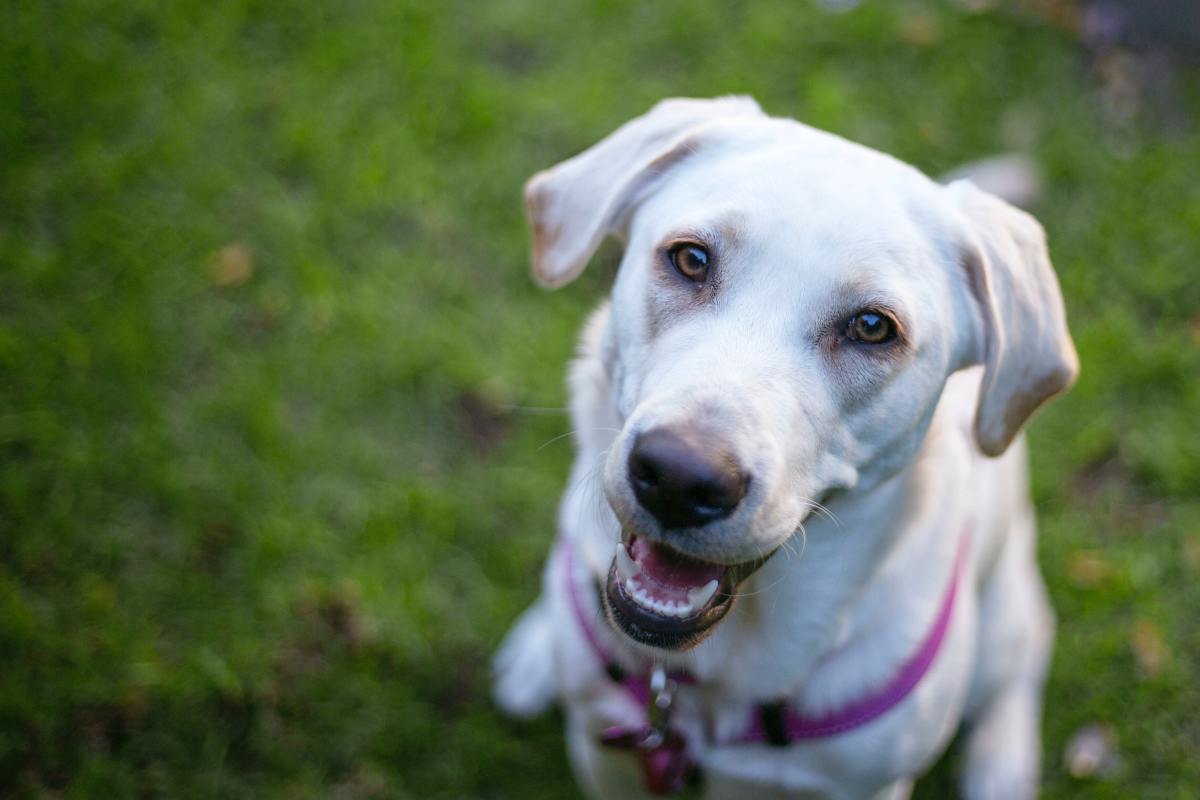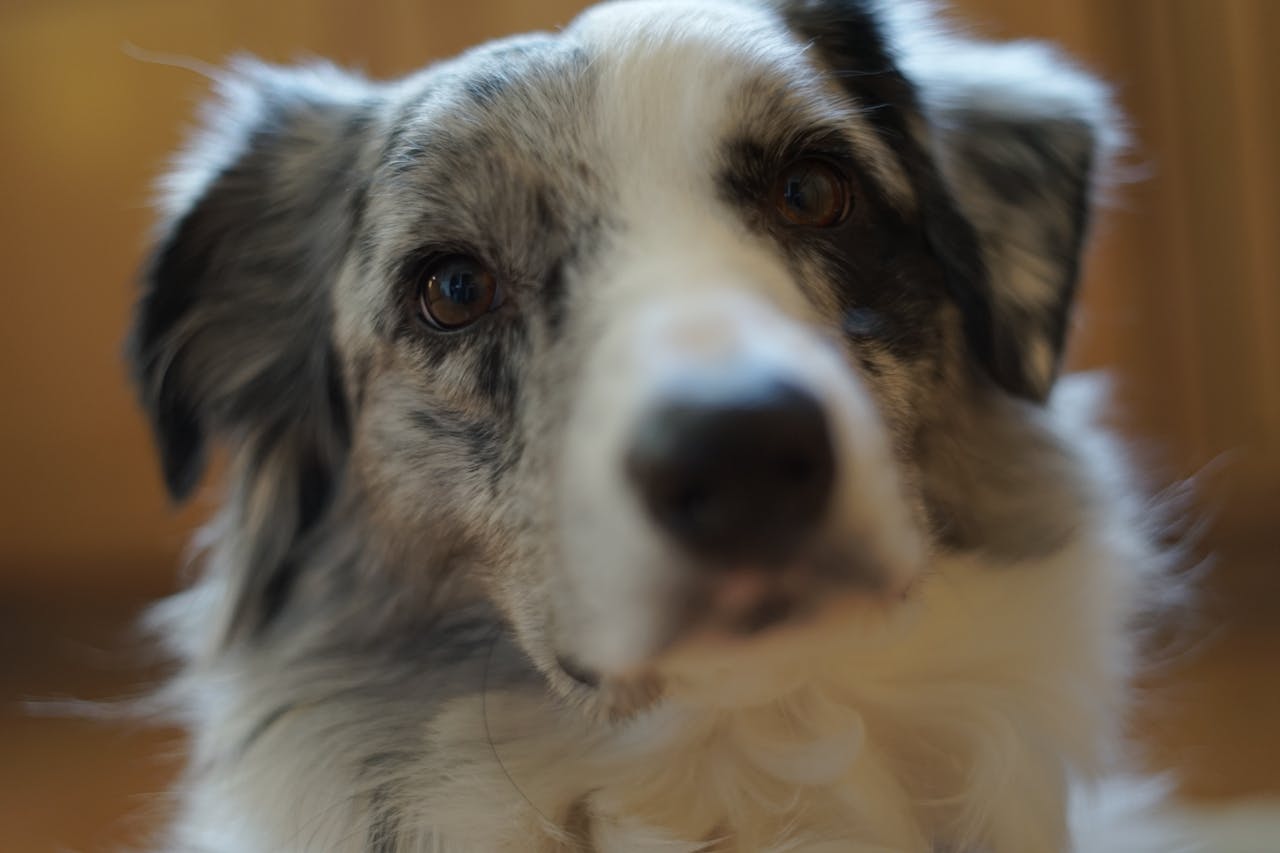If you’re wondering about a dog’s age, the condition and wear on his teeth give you a lot of information. Just as horses’ teeth provide strong evidence of their age, dog teeth have wear patterns that help you discern the age of your new family friend, fairly accurately. How to tell a dog’s age by teeth is pretty straightforward, when you know what to look for!
Here, we review normal puppy tooth development timelines, as well as normal adult incisor tooth wear (with photos), resulting from a close scissor bite, so you can easily know how to tell a dog’s age by his teeth.
In This Article
- How Many Teeth Should a Puppy Have?
- Puppy Teething Timeline, When Do Puppy Teeth Fall Out
- How Many Teeth Do Dogs Have as Adults?
- 5 Ways to Tell a Dog’s Age by Examining His Teeth
- How to Tell A Dog’s Age by Coat, Eyes, Ears and Movement
How Many Teeth Should a Puppy Have?
Puppies should eventually have 28 deciduous teeth: 12 incisors (the front teeth: six upper and six lower), four canines (the fangs), and 12 premolars. They are missing the first premolar and the molars that will eventually develop in the adult dog.
- The incisors are located along the front row of teeth, between the canines. Incisors are used in grooming and nibbling activities.
- The canines or fangs are used for tearing, in conjunction with the incisors and premolars.
- The premolars follow the canines on the sides of the jaw; the premolars and, eventually, the molars are used for heavy chewing.

Understanding the sequence of development of puppy teeth can assist you in gauging a puppy’s age. Like most mammals, puppies are born without teeth, and their mothers are grateful for that!

When Do Puppies Lose Their Teeth?
A frequently asked question is, “Do puppies lose teeth?” Yes, just like humans, puppies’ baby or milk teeth should fall out as their adult teeth erupt. However, adult teeth do not always push out the baby teeth. In this instance a vet will need to remove the baby tooth, to prevent it from deforming the bite or misaligning the incoming tooth.
When Do Puppy Teeth Fallout: The Puppy Teething Timeline
This timeline will tell you how to tell the age of a puppy based on his teeth. Regardless of breed this puppy teething timeline holds true, especially for the timing of the eruption of baby or milk teeth.
| Puppy Age | Tooth Development |
| 3 Weeks | The upper and lower incisors begin to erupt. The incisors are the front upper and lower teeth used for grooming and nibbling |
| 4-5 Weeks | Upper and lower canines (the fangs) begin to erupt. |
| 8 Weeks | The premolar #2 and molars #3 and #4 have appeared. |
| 9-12 weeks | Little visible change occurs in the puppy’s mouth. The roots of the baby teeth begin to resorb, making way for the adult tooth eruptions. |
| 12-13 Weeks | Puppy teething begins! The new adult teeth should push out the rootless, deciduous milk teeth, although occasionally, puppy teeth are retained. If the puppy teeth do not fall out on their own, they will need to be removed by a veterinarian to prevent them from affecting adult tooth placement and the dog’s bite. |
| 4 Months | Adult canines begin to erupt |
| 5 Months | All adult incisors should be in place. |
| 5.5-7 Months | Premolars and molars are erupting, beginning with the teeth closest to the front of the mouth. |
| 8 Months | All teeth should be in place. |
A Full Complement of Adult Dog Teeth

How Many Teeth Do Dogs Have as Adults?
Adult dogs should have 42 teeth: 12 incisors, four canines, 16 premolars, and 10 molars (two on each side of the upper jaw and three on each side of the lower jaw).
For many breeds, full dentition is an issue, and they may develop fewer adult teeth. Missing premolars are more common, but dogs can fail to develop canines, incisors, and molars.
For many show dogs, and especially in the working breeds, full dentition is a requirement. However, many toy breeds, such as the Chinese Crested, are notorious for missing teeth, and allowances are made depending on the degree of missing dentition.
5 Tips on How to Tell a Dog’s Age by Teeth
The condition of a dog’s teeth can be an excellent indicator of his age. However, diet, oral care, or lack thereof, as well as behavior can affect your ability to properly gauge a dog’s age.
For example, factors such as antibiotics taken while adult teeth are forming can affect tooth color from the start. Chewing on bones and other hard toys or surfaces and fence fighting can prematurely break teeth. Also, a diet based exclusively on soft food can accelerate tartar buildup.
In assessing a dog’s age by his teeth we focus on:
- The shape of the incisors (their cloverleaf or fleur-de-lis pattern, height and width)
- Tooth color (white/yellow/orange)
- Molars (tartar buildup)
- Canines (tartar buildup)
- Gums (gingival hyperplasia)
The following milestones can give you a reasonably good estimate of the dog’s age, given that he has enjoyed a normal diet that includes kibble.
How to Tell a Dog’s Age By Teeth at One Year Old
At one year of age, the dog’s teeth will be very white. The lower incisors will have ridges on top of them (the cusp) that resemble a fleur-de-lis design or that of a three-leaf clover. (As time progresses, this pattern of the incisor teeth will begin to wear down to nubs, as we will see in later photos.) No wear should be seen between age one to two years old, so the same photo can be used to see the shape of teeth at this age. The teeth will have just gone from bright white to slightly yellow.
How to Tell a Dog’s Age By Teeth at Two Years Old

By two years old, the dog’s teeth will no longer be as bright white as they were at the start of his first year. Depending on diet and oral care, some yellowing and tartar buildup may have begun on the back molars. The fleur-de-lis pattern on the lower incisors is still intact. Note the middle two lower incisors are naturally slightly shorter than the other lower incisors. The scissor bite will continue to wear them down similarly, maintaining the height ratio.
Three Year Old Bite Begins to Show Wear on Center Lower Incisors

Five Year Old Teeth Shows No Fleur-de-lis Pattern on Lower Incisors
From three to five years of age, there will be yellowing on all teeth, tartar will begin to build up on the molars, and the front incisors will begin to show wear. The cusps of the lower front two incisors will begin to grind down, and the fleur-de-lis pattern will begin to erode; by five years old, half of the ridges of the cusps on the lower incisors will have worn away.

By seven years of age, the cusps of the lower incisors are worn level, and those teeth are substantially shorter than they were when they erupted. Canines will begin to blunt as well. Without dental intervention, the tartar build-up on the molars will appear orange or medium brown.

At eight years old, teeth are noticeably worn down and there may be broken or missing teeth. Some older dogs (9+) may also experience buildup of gum tissue, especially above the canines (gingival hyperplasia).
11 Year Old Teeth: Two Sisters with Different Wear to Their Lower Incisors


Additional Signs for How to Tell How a Dog’s Age
Aging is often breed and size-related. Small dogs regularly live into their teens, and 16-20 year life spans are not uncommon. Large breeds have shorter life spans, with many living only 7-9 years. Therefore keep your dog’s size in mind, when assessing their age according to the following factors.
Coat
As dogs age, they often get grey hairs around their eyes, spreading gradually over their heads. There is a gene that causes some dogs to grey early, it can start as early as age five. However, most midsize dogs begin to grey around age eleven give or take a year.
Eyes
As dogs age, their eyes can become cloudy or blueish. Most dogs will eventually have some clouding from sclerosis of the lens, as do elderly people, especially those who spend a lot of time outdoors. Nuclear sclerosis is a normal part of the aging process that causes hardening and yellowing of the lens of the eyes. Cloudy eyes suggest the dog is a senior for its breed size.
Ears
Dogs often lose their hearing as they age into their senior years. Sometimes it begins with a certain frequency range, where high or low notes are not detected, and eventually all hearing is lost.
Movement
As dogs age, many develop osteoarthritis, just as humans do. Look for stiffened gait and a stiff or roached back for signs of age, indicating senior life stage for its size.
Final Thoughts on How to Tell A Dog’s Age By Teeth
With good oral hygiene, you can fool the experts as to how old your dog is up to age five. However, the natural wear that comes with a close scissor bite cannot be hidden by brushing their teeth or dental hygiene sticks. After age five, a dog’s teeth with a close scissor bite really do tell the tale of his current age! It also begs the question, of how close of a scissor bite is desirable, given how much the lower teeth can be affected over time.
Feel free to upload a photo of your dog’s teeth in the comments below, and let us try to guess his age!




